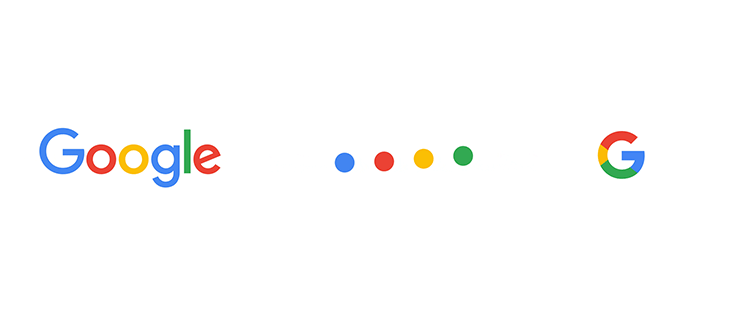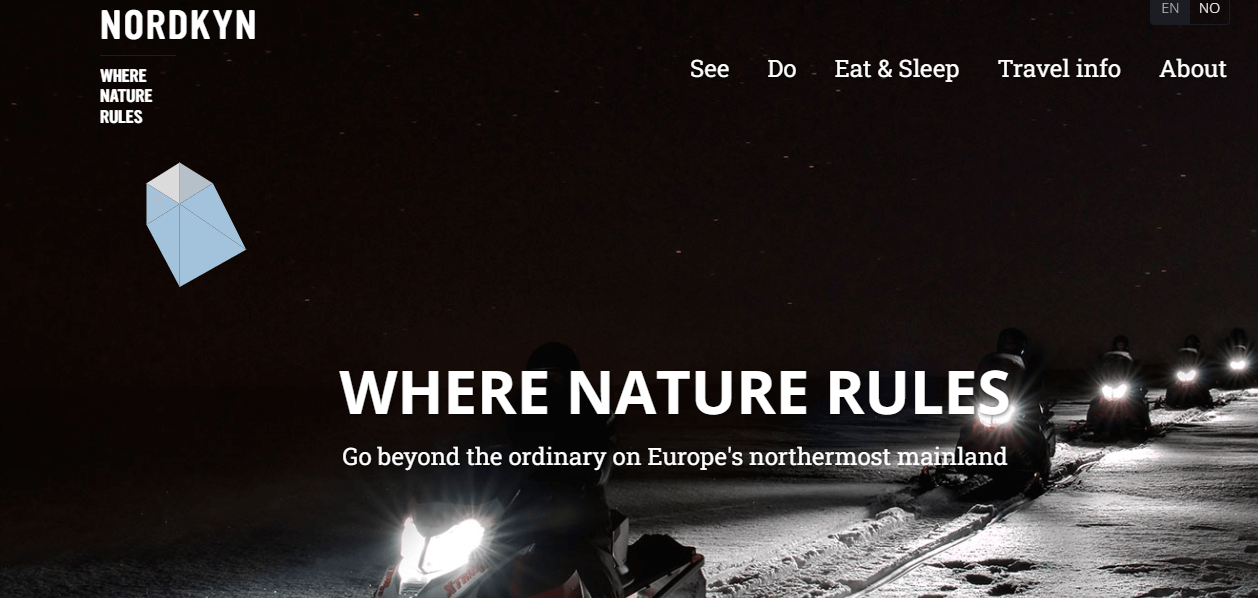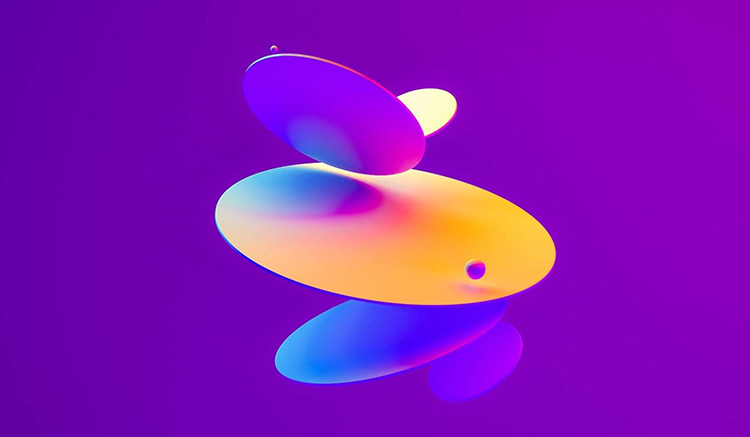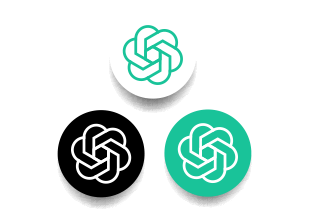SALES / SUPPORT : 844-232-4816
The Rise of Dynamic Logos in Interactive Design
Have we ever lived in a time when adaptation was more important than it is now? The world seems to change overnight — and just about every night. It’s not just about “keeping up with the Joneses” anymore, but keeping up with everything and everyone. That need for responsive transformation filters down to every aspect of life, especially for new business startups trying to make their name in a volatile world.
And hence, the rise of interactive design in branding.
A brand’s logo is the single most important and most-used piece of branding, so it makes sense that interactive design is increasingly used as a method to enhance logos in the form of dynamic logos. What exactly is dynamic design in the context of logo design? How did dynamic logos get started and what are the benefits? And is a dynamically designed logo right for your company’s brand?
Dynamic Logo Design — More Than Just Good Design
If you do a Google search for "dynamic logo," you’re likely to first come across dynamic used as a descriptor of the logo design, as in "Hey, that logo is dynamic!"
But in the context of dynamic design, "dynamic" isn't a synonym for "great" or "dynamite!"
What makes dynamic design so, well, dynamic?
A dynamic logo is one that is not static. Typically, non-dynamic logos don’t change, but stay entirely recognizable across any background or usage. They should be scalable — a vital point for any truly useful logo, since they’re often required for use on products, advertising, building signs, etc. — but as long as they don’t lose integrity with scaling up or down, they’re basically the same piece of design, rendered endlessly.
Not so for a dynamically designed logo. Dynamic design means that the logo can change according to different circumstances and uses. We’ll go into some of the possibilities for transformation, but first let’s look at a few examples of existing and popular dynamic logos to get an idea of what it really means.
Examples of Dynamic Logos
One of the most popular dynamic logos that comes to mind immediately is Google’s logo as displayed on the main search page. Just about everyone is familiar with it. The style, visuals, colors, and sometimes motion changes depending on external factors, such as holidays, current events, and, apparently, the whim of the designers.

Image source: Google
These variations on the logo are separate and distinct from Google’s main logo (the hallmark vibrant colors of the full company name or the brightly-striped lettermark G) and are known as Google Doodles. They are created by an entire team of graphic designers and call attention to all sorts of events, dates, and information. This is a great example of how to use dynamic logo design to enhance the brand identity, because users can be educated and entertained each time they interact with Google’s search page. Google has made a name for itself in many ways, but Google Doodles is definitely up there in branding history.
Another favorite example that is significantly less well known but which is really stellar in terms of dynamic design is the logo for the website of Nordkyn Peninsula in Norway, created to encourage tourism to this remote location. Designed as a feature that enhances the site by reacting in real-time to current environmental factors, the logo changes every five minutes based on new data regarding the wind, wind direction, and temperature, among others. The logo is unique, simple, on-beat in tone and style for the site — and also hits the dynamic design checklist in a variety of manners, including the fact that it’s in motion (or animated), uses generative AI to shift based on the pre-set factors, and changes elements such as shape and color.
Ultimately, both of these examples showcase what a dynamically-designed logo can and should do: enhance the brand and engage the viewer.

Image source: Nordkyn
With a clearer idea of what a dynamic logo actually is, how can you develop one for your own brand?
How To Design A Dynamic Logo
The initial process for designing dynamically basically follows regular design development. From analyzing the brand to choosing elements such as color, font, spacing, and others, all of the first steps need to be taken in order to create the core logo.
A core logo is the jumping-off point for enhanced design, but since even dynamic logos need to be applicable, unique, and accurate for the brand, it’s important to ensure that those first steps are taken. Elements should be chosen carefully to ensure balance, originality, and effectiveness in the core. Regardless of whether you design your logo yourself from scratch or use logo design software or a professional tool, the core logo deserves time and attention before dynamic elements are introduced.
Since the goal is dynamic design, other potential iterations should be taken note of while the core logo is being developed. For most designers, logo design goes through several versions before a final iteration is locked in. The exploratory phase of design is an excellent time to rack up ideas for the end product. However, if it’s decided after lock-in of the core logo that the brand would benefit from dynamic design, those other iterations can be decided upon after the fact. We’ll talk a bit later about whether or not dynamic design is ideal for every brand.
Let’s look at some elements that can be adapted to facilitate a dynamic logo.
Color Changes
Color choice in logo design is one of the most important factors. There’s even an entire school of research into the use of color in marketing and branding and how it impacts the viewer’s opinion and understanding of the brand being represented. This is called the psychology of color, and understanding how it works can enhance the appeal of a logo and allow the designer to specifically target a certain demographic.
Because color choice is so important, selecting a variety of color changes for a dynamic logo requires research into the psychology of color and the target market. But color changes are an easy way to create a dynamic logo because, in and of themselves, they don’t necessitate any real changes in the design itself. Palettes are easy to swap out, and adaptability in this element can ensure that your logo stands out in any circumstance.
Visual Style Alterations
For iconic logos with a central visual, these alterations mean changing the base style of the icon or image. An example would be switching out a photorealistic visual for a sketched or highly stylized version of the same image.
Changing the style of visuals within a logo is a direct way of allowing external influences to impact the design. Again, Google is an excellent demonstration of this, as it frequently changes styles within its set branding and use of the same font.
In-Motion Logos
In-motion logos, or animated logos, contain a moving component. The movement may be shape-shifting from one static iteration to another, such as seen in the logo for Nordkyn Peninsula’s website. Or a portion of the logo may move independently of the rest, such as the logo for Shazam, a music discovery app, in which the halo around the logotype pulses and changes colors like a visual representation of a speaker.
Themed Iterations
Again using Google as a classic example — which just illustrates how Google knocked it out of the park when it comes to excellent branding — themed iterations change according to external factors, like holidays and events.
Mascot logos are another good example, because they facilitate continuity of the main visual, the mascot, but allow for a variety of iterations. An example of this is the mascot for Jack in the Box, Jack, who has been seen in-logo with different hats, expressions, and other features.
Themed iterations can be adapted not only for different events, but also depending on the circumstances in which that particular iteration is being used. This makes it excellent for product displays and packaging.
Light To Dark
A simple and effective variation on the core logo, light to dark dynamic design means applying a fade-in, fade-out to the original design.
While this is another way to get the attention of the viewer and draw the eye to the logo and branding, it’s important to be aware of the background to ensure visibility at all stages of the design.
Interactivity
Truly interactive logos are not found as often as you might think. It’s common to have them linked to a website or social media platform when clicked, but those links are usually just attached to the core logo. But interactive logos can contain an animated or other component that renders them truly dynamic: able to be affected by the viewer or user.
Dynamic Logos for Inspiration

Image source: LogoDesign.Net
Why Use Dynamic Design For Your Logo?

Image source: unsplash.com
Dynamic logo design has been selected by some of the biggest brands, making it clear that this method of design brings something valuable to the table. What are the benefits of dynamic design?
- Good for AR/VR engagement. This year, there are more augmented and virtual reality uses and portals than ever (for example, there are more than a billion AR users worldwide, most of whom utilize some form of AR through their mobile device, and many of whom don’t even realize that they are utilizing AR functions). Dynamic design allows for greater flexibility of a logo, which gives companies the best start as they enter the AR space.
- Invites engagement, especially in the case of animated and interactive logos. It also invites further interest from the viewer simply because a wide range of designs can pique the interest and keep the audience intrigued to see what design comes next.
- Enhances brand personality and image. Dynamic design is smart and can be very playful, both of which are traits that will certainly enhance the brand behind the logo.
Is A Dynamic Logo Ideal For Your Brand?
With all the foregoing, what I have to say next may come as a surprise: dynamic design isn’t for everybody.
That’s just the realistic way to look at things. It’s a fact that dynamic design is simply overkill for some brands. If your company doesn’t have a large virtual presence, or your key demographic for your audience simply would get no benefit or even enjoyment from a dynamic design, it may not be worth the time and effort — and potentially the budget — that goes into creating one. Dynamic designs are stylistic, fascinating, and can be effective, but there are certainly times when your core logo design will be the best choice to represent your brand — such as on your storefront, for example.
With all that being said, dynamic design remains an exciting and useful opportunity for many brands, going forward. Dynamic logos may constantly be changing, but they’re here to stay.
Author Bio
Tarif Kahn is Head of Design at Logo Design who loves sharing his diversified pool of knowledge in graphic design, web design and development, and print design. He enjoys experimenting with new technologies and has a knack for photography. He can be found tweeting at: @kahntarif
